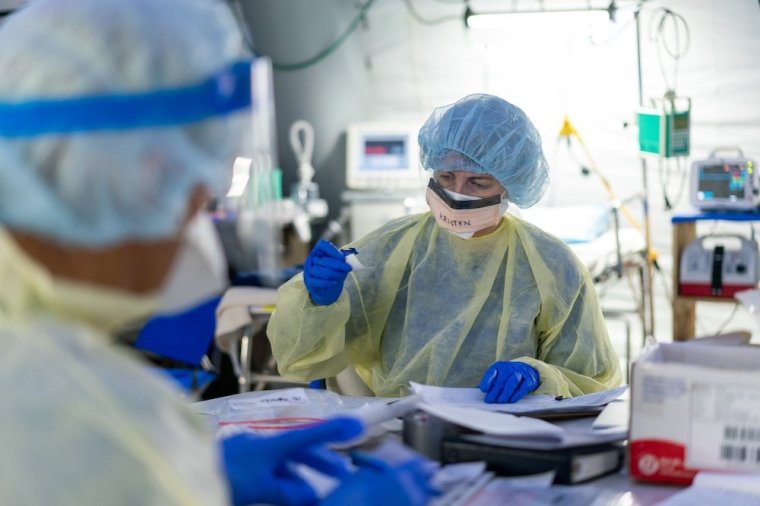
Few families in the U.S. can afford healthcare insurance. The average premiums for family coverage is about $15,000 per year, about the same as a mortgage in Oklahoma. Then why do most Americans have healthcare insurance? Because their employers pay up to two thirds of the cost.
Those without employer subsidized insurance must be content with catastrophic insurance and high deductibles. And by the way, healthcare insurance companies aren’t getting rich. Their average profit is 3%.
One way to reduce insurance premiums would be to cut medical costs because on average 85% of premiums go to pay doctor and hospital bills. A hospital in Oklahoma City has done that for decades and its chief opponents are other hospitals and doctors.
Dr. Keith Smith created the Surgery Center of Oklahoma with a team of 11 other doctors. In a recent speech, he provided an example of the savings his hospital offers:
“One that sticks out is the patient from Georgia who required a urologic procedure, and who had received a quote of $40,000, just for the facility charge. A friend had told him about our facility and after he confirmed that our all-inclusive price was $4,000, he informed his urologist he was traveling to Oklahoma City. Having lost another patient to us the previous month, the urologist contacted the hospital and told them something had to be done, as their price quotes were causing him to lose patients. The hospital matched our price and the patient stayed in Georgia.”
According to Smith, the Center began 24 years ago with a simple mission:
“Our mission was the opposite mission of the hospitals where we had previously worked. Then, as now, hospitals are focused almost exclusively on revenue, many times inflicting surprise and bankrupting bills on their victims. As physicians working in these hospital systems, we were unwitting accessories to these crimes. We intended to operate our facility differently, intending to serve as both medical and financial advocates for our patients.”
Canadians were the first patients to take advantage of the Center’s value.
The most common story then as now for the Canadians was a patient waiting two years to see a gynecologist for a hysterectomy to stop their bleeding, bleeding usually so severe that intermittent transfusions were required. For $8,000, which covers the facility, surgeon, anesthesia, pathology, and an overnight stay at the surgery center, Canadians can end their nightmare.
The first question a Canadian asks when they call us is how long they’ll have to wait. Our answer that there is no waiting time is met with disbelief. A Canadian friend of mine has told me the old joke that no Canadian is truly content unless standing in line.
In spite of the high quality of care and charges equal to 10% of what other hospitals charged, insurance companies would not contract with the Center. Established hospitals immediately began to attack them through state law makers they owned who created a trauma task force. Of course, the task force of politicians declared that their work benefited the health and welfare of Oklahomans, but its real purpose was to close physician owned hospitals such as the Surgical Center. Sympathetic Democrat politicians shut down the task force while Republican law makers continued to battle for their large campaign contributors in establishment hospitals.
Next, hospitals tried to pass a law requiring all hospitals to receive at least 30% of their revenue from Medicare, Medicaid, or uncompensated care. The Center accepted no money from governmental agencies so the law would close them. Smith said, “Once again, a Democrat, Representative Fred Stanley, used his muscle to ensure that this legislation went nowhere.”
In another attack, the hospitals persuaded the state department of health to demand all the medical records of patients the Center had treated. The Center refused and the department attempted to invalidate its operating license. Smith sued and forced the department to back down.
Attacks on the Surgical Center will continue as long as established hospitals can buy politicians. For example, the American Hospital Association endorsed the Affordable Care Act only after it banned the construction or expansion of physician-owned hospitals.
Such behavior by doctors and hospitals wouldn’t surprise readers if they understood the history of the American Medical Association, a union for doctors that Dr. Smith and his colleagues refuse to join. The U.S. enjoyed relatively inexpensive healthcare in the first quarter of the 20th century due to competition within the industry. But the AMA was able to purchase enough Congressmen to give itself a monopoly on the supply of medical care in the country and prices began to soar, as happens with most monopolies.
When Jesus drove the money changers and sellers of livestock from the Temple in Jerusalem, he accused them of turning it into a den of robbers. How did they rob the people? Corrupt high priests had made their shekel the only money that could be given to the Temple, so people with Greek and Roman coins had to exchange their coins for the shekel and having a monopoly, the money changers charged high prices for their service.
Jerry Bowyer wrote in The Makers versus the Takers: What Jesus Really Said About Social Justice and Economics, “This means there was a 100 percent premium on switching from the currency held by the typical Israelite to the required temple currency. As a result, worshippers paid double to participate in the system.” Bowyer documents many other corrupt practices in the Jerusalem Temple by the religious authorities that made them rich. Jesus threatened their wealth.
What the AMA and established hospitals are doing to healthcare in the U.S. is hardly different from the robbery by the Jerusalem Temple money changers and livestock sellers. Those who claim they care about the poor will want to end their monopoly on healthcare and force them to charge a just price in a free market.
No comments:
Post a Comment